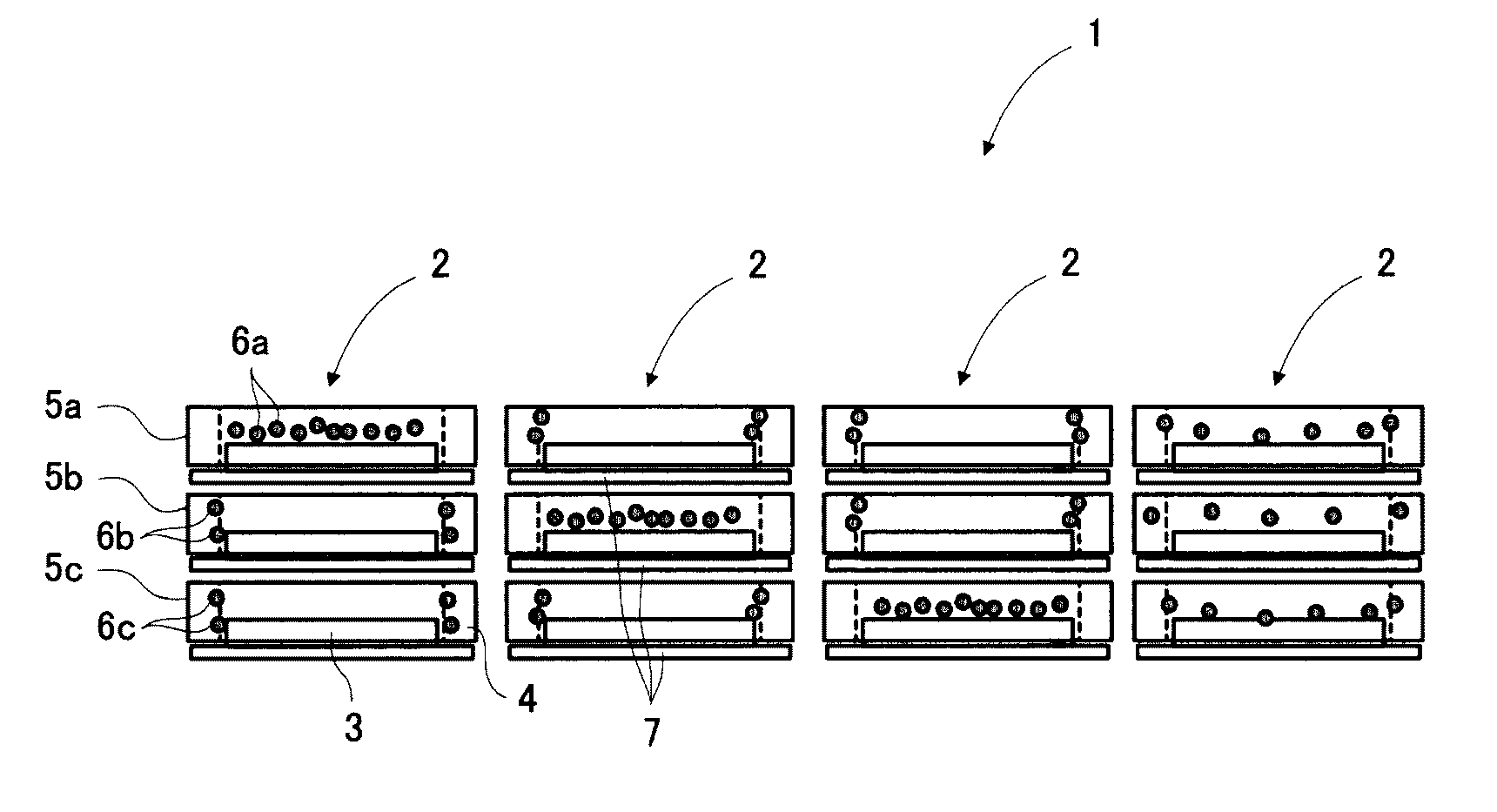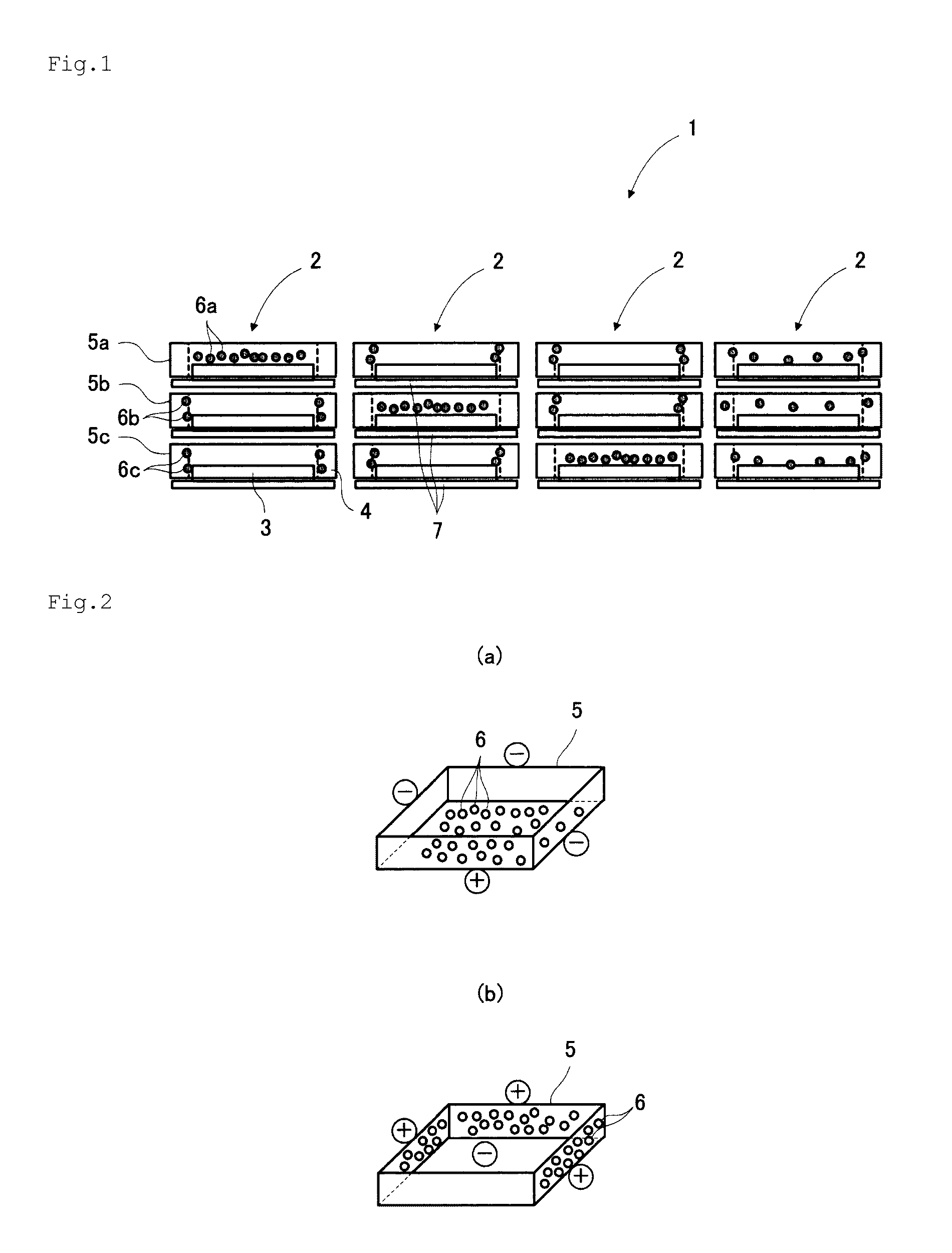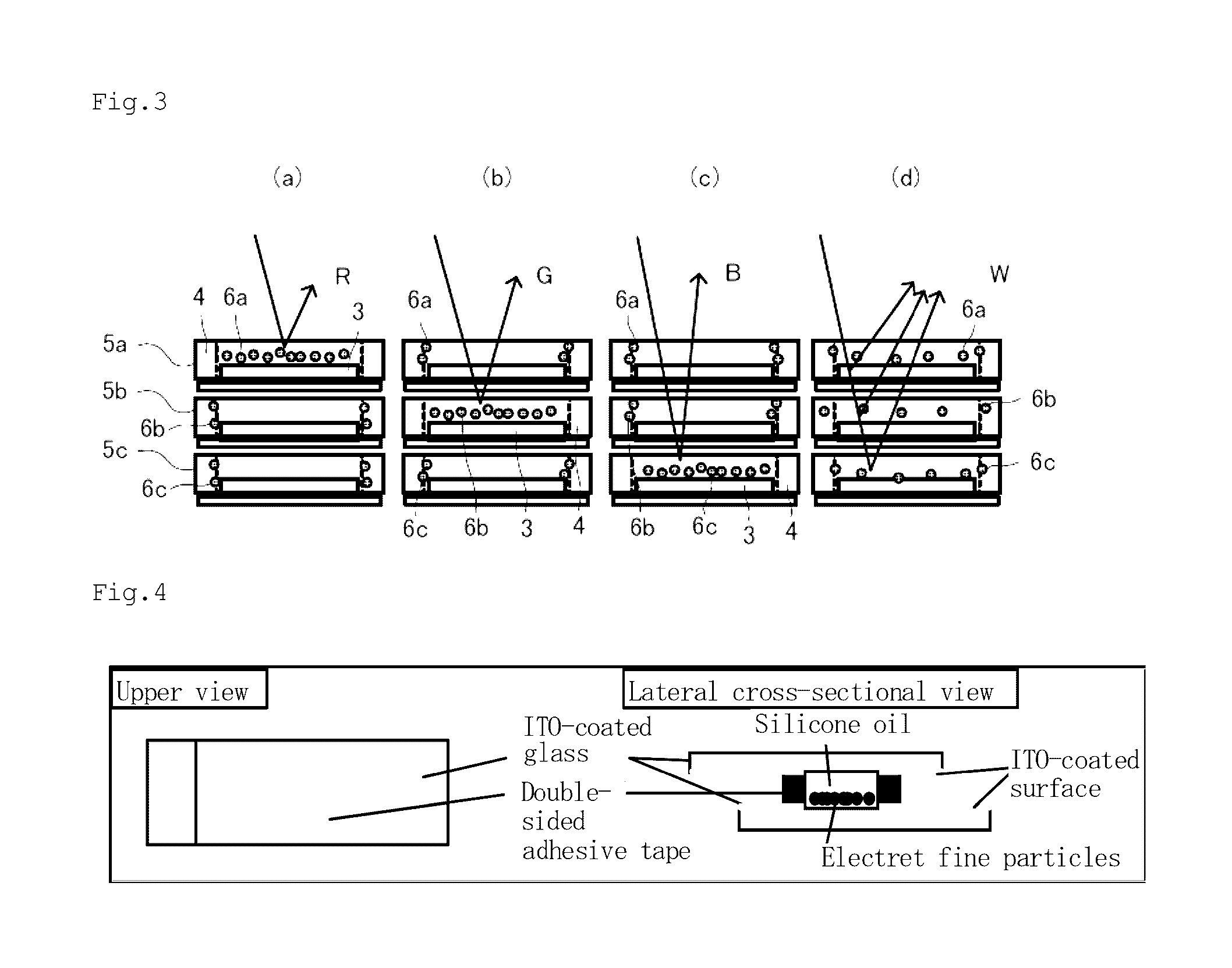Fine electret particles and process for producing same
a technology of electret particles and fine particles, applied in the field of fine electret particles, can solve the problems of secondary aggregation, small and unstable charge potential, inadequate deletion of previously displayed images, etc., and achieve excellent electrophoretic properties
- Summary
- Abstract
- Description
- Claims
- Application Information
AI Technical Summary
Benefits of technology
Problems solved by technology
Method used
Image
Examples
example 1
[0120]The following were used as starting materials for producing electret fine particles.
A. Zeffle GK-510 (a core-part material that can disperse a pigment therein)
B. Pigment
C. Zirconia beads Ø 0.3 (pigment ground media)
D. VT470 ethyl acetate solution (a shell-part material)
E. Desmodur L 75 (a curing agent for the core part)
F. PVA 224 5% aqueous solution (emulsifier)
[0121]Electret fine particles were prepared according to the following procedure.
(1) A and B were weighed, placed in a beaker, and stirred using a dissolver. Stirring conditions: 500 rpm×30 minutes
(2) C was weighed and added to (1). Stirring conditions: 2000 rpm×1 hour.
(3) (2) was filtered through a 250 mesh filter to remove beads to obtain a pigment dispersion.
(4) (3) and D were weighed and stirred in another beaker using a dissolver. Stirring conditions: 700 rpm×30 minutes.
(5) E was weighed and added to (4). Stirring conditions: 1000 rpm×1 hour
(6) F was weighed (200 g) and placed in a beaker, and stirred using a homom...
example 2
[0123]Electret fine particles were prepared as in Example 1, except that components A and E were replaced with the following:
A. Methyl methacrylate monomer (a core-part material that can disperse a pigment therein); and
E. Azobisisobutyronitrile (a polymerization initiator for the core part)
example 3
[0124]Electret fine particles were prepared as in Example 1, except that components A and E were replaced with the following:
A. jER 828 (a core-part material that can disperse a pigment therein); and
E. jER Cure ST11 (curing agent for the core part)
PUM
| Property | Measurement | Unit |
|---|---|---|
| mean particle diameter | aaaaa | aaaaa |
| mean particle diameter | aaaaa | aaaaa |
| particle diameter | aaaaa | aaaaa |
Abstract
Description
Claims
Application Information
 Login to View More
Login to View More - R&D
- Intellectual Property
- Life Sciences
- Materials
- Tech Scout
- Unparalleled Data Quality
- Higher Quality Content
- 60% Fewer Hallucinations
Browse by: Latest US Patents, China's latest patents, Technical Efficacy Thesaurus, Application Domain, Technology Topic, Popular Technical Reports.
© 2025 PatSnap. All rights reserved.Legal|Privacy policy|Modern Slavery Act Transparency Statement|Sitemap|About US| Contact US: help@patsnap.com



